Pendulous crop in backyard chickens can be a stressful event to manage.
You might even be wondering what pendulous crop even IS, especially if you’re a new chicken mama or papa. Well, I’m not going to pretend pendulous crop isn’t serious. It can definitely be an issue and it must be addressed. If you don’t take care of it, your chicken might not absorb the nutrients it needs and eventually, will waste away, lose weight, and die.
In this article, I’m going to tell you precisely what pendulous crop in your flock is, and how to deal with it. By the end, you’ll have a good idea of how to handle this situation, should you ever need to help one of your chickens!
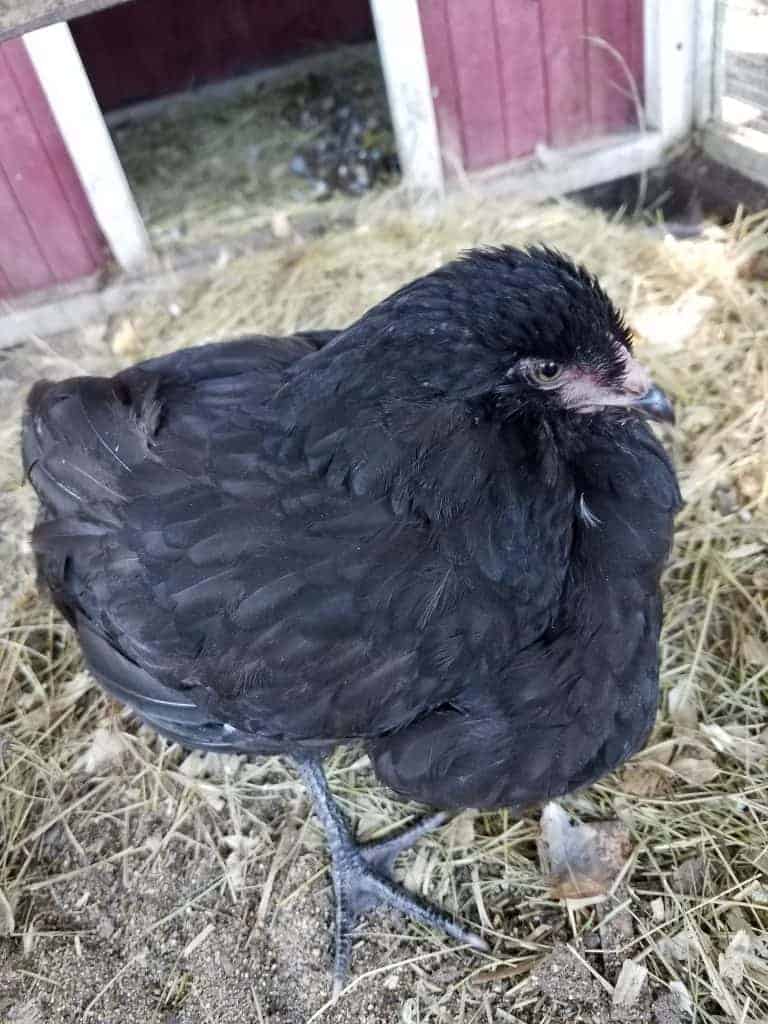
Table of Contents (Quickly Jump To Information)
What is a pendulous crop?
You might have noticed the word “pendulous” in pendulous crop. That’ll give you a starting point to understand this health issue. Pedulous crop is when the crop gets muscle gets stretched out and doesn’t return to its normal size.
In case you don’t know, the crop is part of your chicken’s digestive system. It’s where food is stored and begins the breaking down process before it makes its way to the digestive tract. It’s located on the front right side of the chickens lower neck area.
It’s critical that the crop is healthy and in good shape to help your hen digest her food. When a hen gets pendulous crop, it can be due to a couple things:
- The crop is impacted, and the weight of the food the hen consumes is getting heavier and stretching the crop.
- The hen might also be anatomically predisposed to having pendulous crop. This means her crop is larger, or naturally sags more than it should.
Either way, the crop can become impacted and needs to be cleared out.
You might wonder what the difference between pendulous crop and an impacted crop is. Basically, pendulous crop is a type of impacted crop.
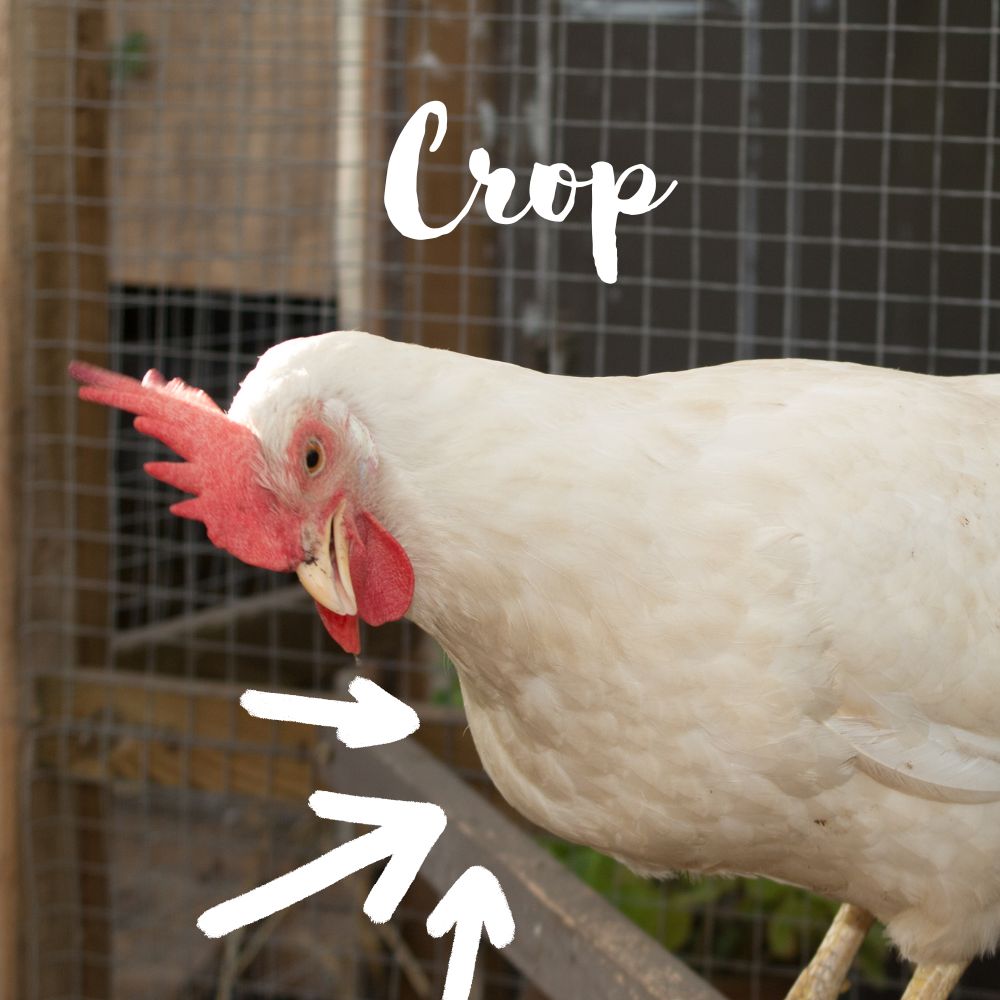
Why does pendulous crop happen?
Simply put, the reason pendulous crop happens in backyard chickens is because the crop stretches due to too much food or possibly the anatomy of the chicken. After your hen swallows food, her meal gets stuck, and can’t leave the crop. This can happen due to a piece of food that’s too big, too much food, or perhaps foreign objects, etc.
As your hen eats more and more, the pieces of food then sit there fermenting and not getting passed through the digestive system. While pendulous crop is an issue by itself, it also means the chicken isn’t getting nutrients. Eventually, the chicken can die of starvation.
The chance of an incidence of pendulous crop is not exactly high, but it does happen.
How do I know whether my hen has pendulous crop?
If you see her crop bulging and sagging and possibly moving around (meaning, it doesn’t feel like a nice, tight, round ball), she might have a pendulous crop.
If you notice her crop isn’t smaller in the morning (after digesting food) or if your backyard chicken looks physically poorly or sick, then she might have crop issues. It’s always best to double check with a vet!
What can I do about a pendulous crop?
Assess the situation
First, make sure the chicken actually has a crop issue. Keep her off food for 24 hours (still give water). When crops are full, they can be quite large – anywhere from the size of a golf ball (in a young chicken) to the size of a peach or tennis ball in an adult.
So, you should first determine whether the crop is actually functioning. Stop giving her food for 24 hours. The next day take notice. Does the crop become completely empty the next day? For example, it was very full and now you can’t see much of a lump at all? If so, the crop is working the food towards the rest of her digestive system and you’re not dealing with a blockage.
If it’s still full and you know she hasn’t eaten anything, her crop is likely impacted. You’ll want to double-check this with a vet.
Take action
You can first try giving your chicken some grit to help it digest. After that you can give her a teaspoon of olive oil with a syringe. It can help loosen up the “stuff” in the crop. If that doesn’t work after a couple of hours, you need to empty the crop.
To empty the crop, you will have to “burp” your chicken (which is not as easy as it sounds). Burping consists of helping your hen regurgitate the feed that’s in her crop, and (hopefully) removing whatever is causing the crop to be impacted.
Hold your chicken under your arm so her head is at an angle towards the ground (essentially hold the chicken upside down). Massage her crop gently until the food is regurgitated (this is bascially inducing vomiting). If you’re not sure how to do this or if you’re afraid, then consider taking your chicken to an avian vet who can do it for you. You can read full instructions about dealing with impacted crop and emptying it in this article.
After the crop is empty, keep the hen off food for another 24 hours. Be sure to give her water. Observe her closely for signs of additional problems. Double-check with a vet about any signs you should look for in your particular backyard chicken – they’re all different.
You can then slowly reintroduce food, making sure it’s in small pieces. If you’re still concerned, you can err on the side of caution and offer moistened food that’s easy for your backyard chicken’s digestive system to break down.
Additional things you can do
You can also mix raw organic apple cider vinegar WITH THE MOTHER (more on apple cider vinegar here) into her water. The beneficial bacteria will help her digestive system.
Offer dried oregano with her feed, and parsley (which are both full of amazing nutrients for chickens). Or try this non-GMO feed that has oregano, garlic, and oyster shells mixed into it.
As for food, dried river shrimp are a good option – they’re small and easy for beaks to break apart. They’re also very high in protein, and if your hen is still recovering and nervous, they’re very tempting for even the pickiest eater. Mealworms are equally tempting and affordable. Try these.
You can also mix their feed with brewer’s yeast, if you want to make sure your hen is getting plenty of vitamins after her bout with pendulous crop. Our brewer’s yeast is fortified with vitamin B 3, B6, and B12 and garlic, oregano, and echinacea (all herbs traditionally used to support healthy immune systems).
Some sources say to flush the crop with epsom salts, but I have never personally tried it.
What is a sour crop?
It can be easy to get pendulous crop, impacted crop, and sour crop confused. We’ve already talked about two of those. But what about sour crop?
Sour crop occurs when your hen’s crop becomes infected with the fungus Candida albicans, according to the University of California, Davis.
The fungus invades the lining of the crop and begins to breed, causing an upset in the natural environment in the organ.
Read more here: How To Treat Sour Crop In Chickens
Summary
It’s important to know that if your backyard chicken gets an impacted and pendulous crop once, it’s more likely she might get it again. The best thing to do is keep an eye on your backyard chicken and double check that the chicken’s crop is working correctly.
Mild cases can work themselves out, or be easy to deal with. More servere cases may even need surgery if you are willing and able to pay for such a service.
Maat van Uitert is a backyard chicken and sustainable living expert. She is also the author of Chickens: Naturally Raising A Sustainable Flock, which was a best seller in it’s Amazon category. Maat has been featured on NBC, CBS, AOL Finance, Community Chickens, the Huffington Post, Chickens magazine, Backyard Poultry, and Countryside Magazine. She lives on her farm in Southeast Missouri with her husband, two children, and about a million chickens and ducks. You can follow Maat on Facebook here and Instagram here.

![Save Money On Chicken Feed: 8 Ways To Save Mega Bucks When Feeding Your Chickens What The Cluck?! Session 10 [Podcast]](https://thefrugalchicken.com/wp-content/uploads/2015/11/save-money-chicken-feed-feature.jpg)
![Chicken Mistakes: Don’t Make These 5 Mistakes With Your Flock! (They’re Not What You Think!) [Podcast]](https://thefrugalchicken.com/wp-content/uploads/2015/11/chicken-mistakes-podcast-8.jpg)
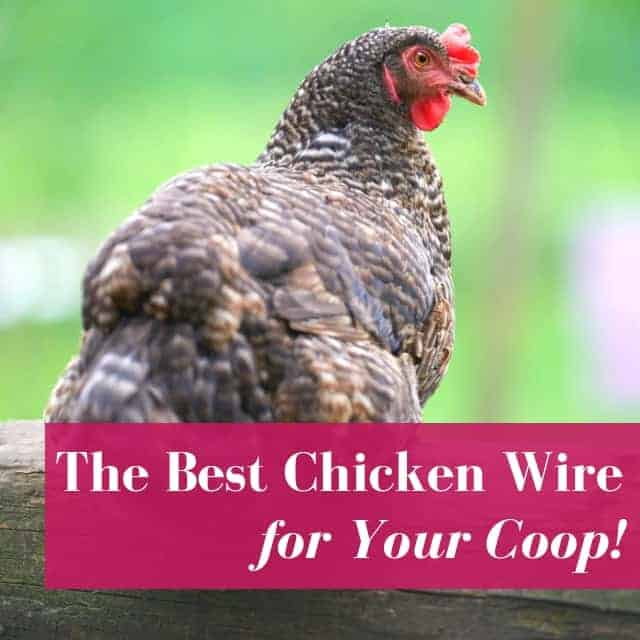
![What Kind Of Chickens Lay Blue Eggs (Or Green…Or Olive…)? [Podcast]](https://thefrugalchicken.com/wp-content/uploads/2016/02/what-kind-of-chickens-lay-blue-eggs-feature-min.jpg)
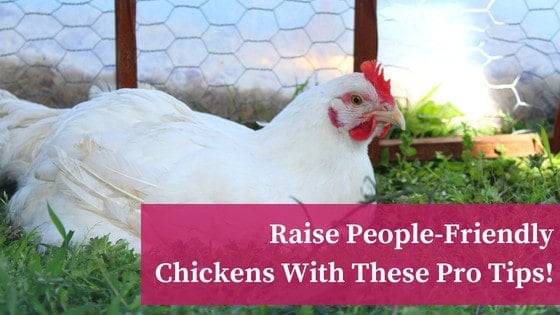
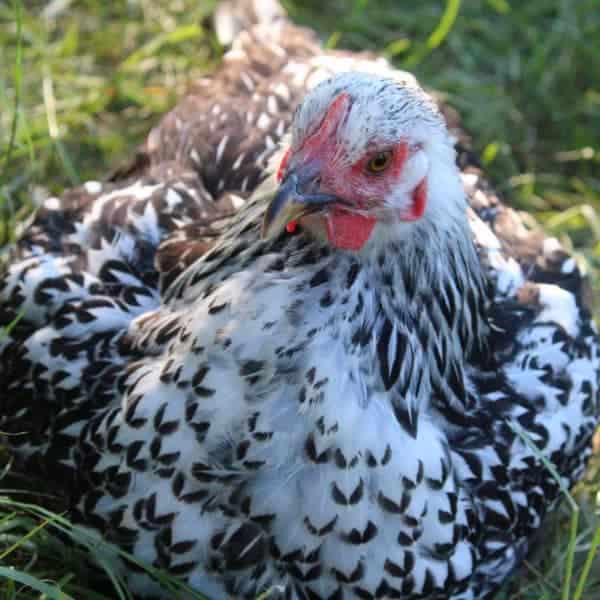
Nice article, very informative and I haven’t known about it before
Very good and informative article very well written and being new to this I didn’t know anything about this. thanks
Good information. I actually had a bantam cochin pullet with this condition. I nursed her along for a couple of months, but after several weeks I was no longer able to empty her crop. She became very week and stopped eating. I decided to humanely put her down. Out of curiosity and to try to learn about her condition, I performed a necropsy. (I’m a retired board certified, nurse assistant at surgery.) Her crop was impacted with sand. We have very sandy soil.
Wow…I thought I was the only one using that term. We had a darling Ameraucana who was seemingly predisposed to a pendulous crop. She started by eating way too much long strands of grass and we had a mild impaction. I’ve purged more crop than I ever would admit to in a court of law, but I’ll tell you…. it really is a help. Over the long haul it probably was what killed her, just got way past what we could fix. She was such a great hen and taught us more than we ever did for her I’m sure. She was also our first bumblefoot surgery, and had to put her beak on with some superglue. Man.. what a ride this chicken parenting is. Thanks for the information always.
One way to prevent this condition is if you have straw in your chicken coop get rid of it! Chickens will nibble at it and increase their chances of geting this condition. Good article. thanks for the awsome information!